

History of Autism in Singapore
by Kenneth Lyen
Founder of the Rainbow Centre, Singapore
HISTORY TAKING
As a medical doctor I am always dealing with history. We take a history of our patients’ illnesses. We learn about diseases over the centuries from a historical perspective. And sometimes if we are lucky, we are given an opportunity to make history, albeit a modest footnote in the overall sweep of Singapore’s history.

RETURNING FROM OVERSEAS POSTGRADUATE PAEDIATRIC STUDIES
When I returned to Singapore in 1983 after completing my postgraduate paediatric studies in the United States, I was invited to join the department of paediatrics at the National University of Singapore under Professor Wong Hock Boon. He placed me under a subspecialty team led by Professor Freda Paul a developmental paediatrician. She had help start a number of schools for special needs children, now renamed the Movement for the Intellectually Disabled of Singapore (MINDS)

After a couple of months, she told me she would be retiring and asked if I could take over her clinic for special needs children. My expertise was not in developmental paediatrics, but I did have some interest in this area because I had taken care of children with physical and learning challenges throughout my medical training. So I gave a somewhat tepid answer: “okay, lah”.
What I did not realize was that her clinic had over 1000 patients... it was overwhelming!
CHILD DEVELOPMENT UNIT (1983)
I renamed the clinic the Child Development Unit, and a variety of special needs children were seen, including Down Syndrome, Cerebral Palsy, Hearing Impaired and Visually Impaired children. However I noted that children over the age of 7 years received schooling at the MINDS schools, but there was hardly anything for those under 7 years old. MINDS had just started an Early Intervention Program in 1983 but it only had a handful of children. Also there was nothing available for multiply disabled persons, such as developmentally delayed children who also had an additional physical, hearing or visual problem.

COMMUNITY CHEST OF SINGAPORE (1983)
In 1983, Dr Ee Peng Liang had set up the Community Chest of Singapore to fund voluntary welfare organisations to provide services for disadvantaged persons. But first I needed to settle down in my new position at the university, as well as managing the Child Development Unit. In 1985, I went to see Dr Ee to ask for his help to expand the Early Intervention Program in MINDS, as well as starting a new program for Multiply Disabled Children. He invited me to chair a committee to write a research paper on the needs of these children, and to write a more detailed formal proposal. The Community Chest decided to fund this new program in 1986.

MINISTRIES OF COMMUNITY DEVELOPMENT AND EDUCATION (1986)
With funding in hand, I approached the Ministry of Community Development (Youth and Sports) and the Ministry of Education for their help. Dr Tay Eng Soon, the Minister of State for Education gave us permission to set up our new program at a disused primary school at Margaret Drive, which we renamed the Margaret Drive Special School. He charged us $1 per year rent!

MARGARET DRIVE SPECIAL SCHOOL (1987)
In 1987 we started the Margaret Drive Special School, and I invited Ann Devadas who was a special education teacher at Dover Court International School, and she agreed to be our first principal.
We successfully expanded the Early Intervention Program which catered for special needs children under the age of 7 years, including those diagnosed with Down Syndrome, cerebral palsy, and other developmentally delayed children. Out program for the multiply disabled took in children with more than one problem, including those with hearing impairment, visual impairment. Many of the children were referred from the Child Development Unit at the National University Hospital.
AUTISM?
However, I started to notice that there were some children who had a cluster of some of the following manifestations, and had not received a formal medical diagnosis:



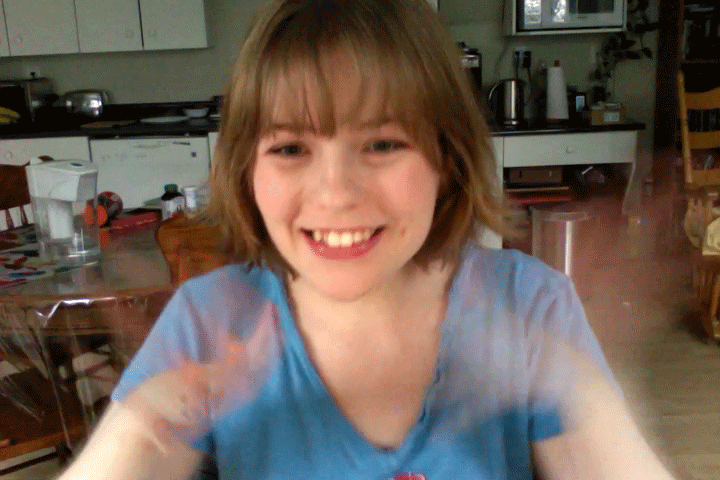
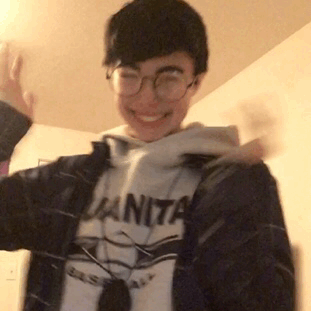
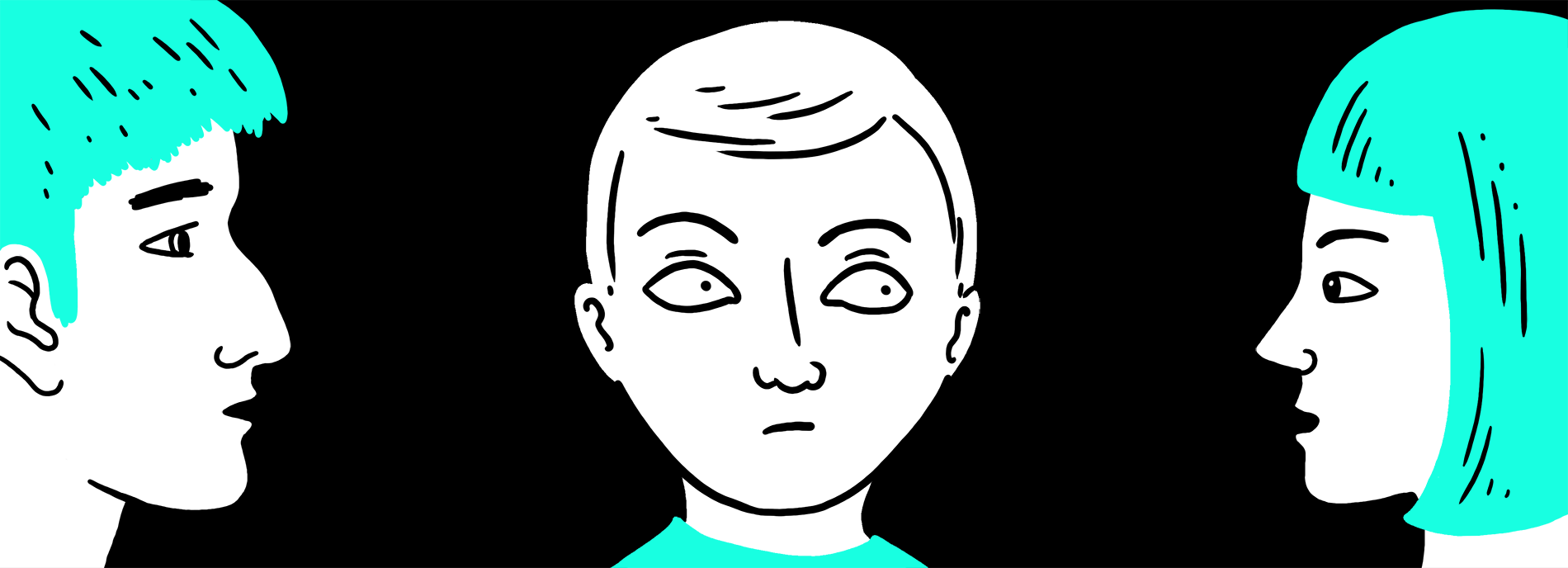



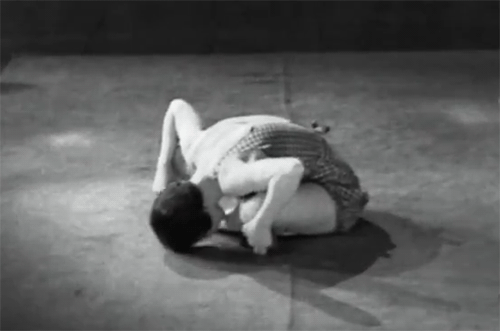
Many of these children were good at drawing, doing jigsaw and maths puzzles, etc. My undergraduate training in England had exposed me to children with autism.
Therefore, I went to see a senior child psychiatrist and asked about his experience with autism, and how many autistic children he saw. His reply was bewildering. He said “there are no autistic children in Singapore”.

Subsequently I was told by other medical colleagues that autism was a disease of non-Asian foreigners, and did not affect Asians. Of course I did not believe them because I had quite a number of Asian autistic children in my Child Development Unit.

LEO KANNER and HANS ASPERGER
After a while, I realized that his definition of autism was these paediatricians and psychiatrists used the Kanner 1943 definition that required autistic children to have little speech, poor socializing abilities, and obsessional repetitive behaviours. When I reviewed the children attending my Child Developmental Unit, I noted that they had a milder form of these traits, more like the children described in 1944 by Asperger. Both Kanner and Asperger said that autism is very rare.
The senior psychiatrist said that autism does not exist in Singapore. But I knew it did.

DIAGNOSING AUTISM SPECTRUM DISORDER
My first problem was I had to prove that autism existed in Singapore, and therefore I had to make a proper diagnosis. But which of the many existing tests should I choose for diagnosing autism? Was it the American Psychiatric Association’s Diagnostic and Statistical Manual (DSM), or the International Classification of Diseases (ICD), Autism Diagnostic Interview (ADI-R), or the Autism Diagnostic Observation Schedule (ADOS), or the Childhood Autism Rating Scale (CARS) that was developed by Eric Schopler, Robert J. Reichier, and Barbara Rochen Renner who developed the TEACCH program that I will bring up again later. Luckily I did not have to decide which test to adopt. I was fortunate to have expert psychology colleagues who chose the instruments that were most appropriate, and that they were most comfortable with. I accepted their choice, and I did not discriminate against any of them.
NO HELP FOR AUTISTIC CHILDREN AND THEIR FAMILIES
Children with autism and their families had no help. The competitive nature of our educational system meant that any child doing badly at school was removed. Some went to the MINDS schools, but most stayed at home. What should I do?

“JUST DO IT”
Armed with a professional and independent diagnosis of children who were autistic, I decided to follow Nike’s advice: “Just do it!” So I embarked on a journey to provide education and training for children with autism. If I had known how difficult and how long the voyage would take, I might never have embarked on this adventure!
First I needed money. Once again I asked Dr Ee Peng Liang of the Community Chest for funding. He gave me immediate support. My admiration for Dr Ee grew to infinity!
Next I needed premises. Luckily there were a few unused classrooms at the Margaret Drive Special School that I had established in 1987, so that problem was solved.

DR VERA BERNARD
Then I needed to find an expert to lead the program. By sheer good fortune, I received a telephone call from a German lady who said that she had expertise in teaching autistic children, and that her research doctorate was in autism. She was Dr Vera Bernard, and she had relocated to Singapore because her husband Hans Ulrich Bernard was appointed a research professor at the Institute of Molecular and Cell Biology. Vera was appointed associate professor at the department of Psychology at the National University of Singapore.

BEHAVIOURAL THERAPY
I invited her to the Margaret Drive Special School, and discussed how she might want to start a program for autistic children. She said that she would use behaviour modification as the mainstay of the program. My heart sank. My conception of behaviour therapy was Pavlov ringing bells to make dogs salivate, and BF Skinner getting pigeons to depress a lever for food. I thought that behaviour therapy was a very superficial mode of treatment. I had also read Noam Chomsky’s severe critique of behaviour therapy.
“Oh dear!” I thought to myself, “this is going to be disastrous.” However, sometimes it is useful to be ignorant about things, and I must confess that I was quite illiterate in the education of autistic children. So I bowed to Vera Bernard’s superior expertise.


Dr Vera Bernard told me that she had worked under Bernard Rimland founder of the Autism Research Institute in San Diego California. Vera suggested introducing a new program to Singapore, which she named the STEP program (Structured Teaching for Exceptional Pupils).
It was based on Applied Behavioral Analysis (ABA) and the Treatment and Education of Autistic and Related Communication Handicapped Children (TEACCH) which was developed at the University of North Carolina in 1964 by Eric Schopler and Robert Reichler.

Vera showed me some publications supporting the efficacy of Applied Behavioral Analysis (ABA) and the the TEACCH method for autistic children. I did not know enough to have an opinion, so I bowed to her expertise. In actual fact I have always regarded the quality of education to be more dependent on individual teacher-student interactions rather than to the prestige of any one program or any one institution over another. You can go to the top-ranked school but this might be catastrophic for you if you could not fit in, or you can go to a lower-ranked school but shine in that environment.

TEACCH
The TEACCH program works from the premise that autistic persons are predominantly visual learners. Behavioral intervention strategies were based on a structured format: visual, physical, regular schedules, work systems and task organization. It used an individualized approach and it recruited the involvement of parents or other caregivers. It built on a child’s strengths and emerging skill areas using behavioural reinforcements, and not aversives.
What I liked about this program was that therapy was individualized, which is something I had already started with the Early Intervention Program. It was evidence-based, which my entire medical training had embedded into my scientific philosophy. It was structured so that the autistic child could draw comfort from a more routine training. And strategies were built on the strengths of the child: for example many autistic children were visual learners, and therefore it utilized this ability.

STEP PROGRAM (1989)
As mentioned above, Vera named our program STEP Structured Teaching for Exceptional Pupils).
The broad objectives of the STEP program at the Rainbow Centre include:
-
Improve communication through speech therapy
-
Increase socialising skills
-
Increase independence, self-care
-
Improve quality of life of the child and the family
-
Reduce maladaptive behaviours like aggression and self-injuries

JUNE THAM
Let me go back in time. A few years earlier I had invited June Tham to join the Margaret Drive Special School, but she did not want to leave her position in another special school. In 1989, when I invited Dr Vera Bernard to start the STEP program, I needed an executive director to manage the school and the STEP program. I asked her again, and this time June agreed to join us as executive director. She deserves much of the credit for laying the foundation and the success of the programs for autism spectrum children, not only for our school, but subsequently for other schools and organisations throughout Singapore.
TEACHER TRAINING
What else did we need? We needed trained teachers. There were none available. So we set up our own in-house training program. We needed speech and occupational therapists, and another psychologist. So we scoured Singapore and South-East Asia for them. We found some of them, and we sent others for training overseas.
Below are the therapies that we implemented as part of the STEP program:






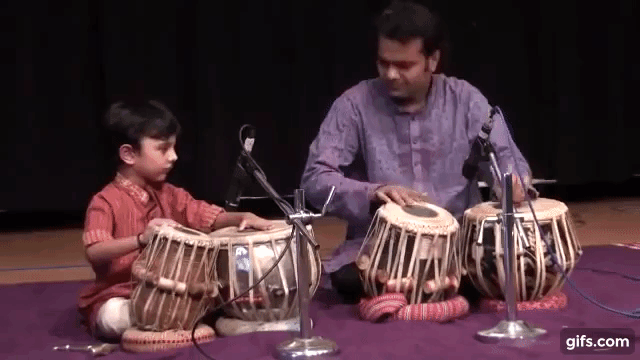
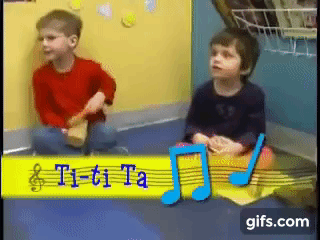
RESPONSE TO STEP
Over time, I saw at first hand that students that attended STEP learnt to speak, socialize, and their obsessional behaviors diminished, compared to those children on the waiting list. In fact I totally changed my opinion about behavior therapy. I surmised that by training children to respond to you, for example if a child responds to your greeting: “Good morning”, you might be more likely to carry on the interaction: “So how are you today?” And if the child utters something like “Fine!” you as a teacher will be more drawn to that child, and will more willing to continue interacting with them. Children learn through interaction with others. Perhaps this is one of the components of behavior therapy that may be part of the reason why it works.

In 1989 we started STEP with around 12 students, and by 1992 there were around 50 students. Since then we have progressively increased our numbers. Currently we have three schools, at Margaret Drive, Yishun Park, and at Woodlands, serving a total of just over 700 autistic students, and taught by over 200 specially trained teachers and therapists.

RAINBOW CENTRE (1992)
To run the three schools, I centralized the administration to one board of directors, and I named this umbrella body "The Rainbow Centre". Several people objected to the name “Rainbow” because of its gay connotation. But I was stubborn; I stuck to my guns. I told them that I wanted our centre to be inclusive, and that I did not discriminate on any grounds. So I got my own way!
FIRST PURPOSE BUILT SPECIAL EDUCATION SCHOOL (1998)
In 1998 the school at Margaret Drive was completely rebuilt, and this was the very first purpose-built special education school in Singapore.

SECOND SCHOOL (1995): BALESTIER TO YISHUN PARK
To cope with the very long waiting list, in 1995 we started our second school at Balestier Road, which was moved to Yishun Park in 2005. The picture shows Yew Teng Leong, a past president of the Rainbow Centre.

THIRD SCHOOL (2018): WOODLANDS CAMPUS
Our third school is located in Woodlands. The picture shows Dr Kenneth Poon, the current president of the Rainbow Centre.
FAMILY AND PARENT TRAINING (1993)
In 1993 we started a program for family and parent training.
TRAINING AND CONSULTANCY OF PROFESSIONALS AND CAREGIVERS (2003)
In 2003 we established a program to train professionals and caregivers and to provide consultancy for them.

TOWARDS INCLUSION
I am a great believer in inclusion. Singapore’s education system is already a segregated system, where we separate children according to their IQ and other abilities. Philosophically, I believe that we should avoid further segregation. Although we started grouping children by diagnosis, over time, we gradually integrated children of different abilities. For example, autistic children can benefit from the stronger communication abilities of some of their classmates, and classmates with multiple disabilities. We invited President Halimah Yusof to our school, and on a separate occasion, we invited the Prime Minister Lee Hsien Loong to celebrate our philosophy of inclusion.

FAMILY EMPOWERMENT PROGRAM (2018)
Another philosophy of mine is that the total management of children must involve everyone. There is a tendency to leave out the family in children's education. In 2018 we started a new program to help families cope with their autistic child. We received help from the Koo Foundation in Hong Kong. The picture above shows Lydia Koo who helped us start this program.


PREVALENCE OF AUTISM SPECTRUM DISORDER
There are over 4,000 children with autism spectrum disorder in Singapore, making the prevalence about 1 in 150, which is close to the World Health Organization’s worldwide estimate of 1 in 160.
Worldwide prevalence of autism spectrum disorder is around 1.5 to 3 per thousand population. The USA prevalence seems to be the highest.

OTHER SINGAPORE SCHOOLS FOR AUTISM CHILDREN
There are now many more schools in Singapore handling children with autism spectrum disorders, including Grace Orchard, Eden School, St Andrew’s Autism Centre, and the older schools of MINDS, Association for Persons with Special Needs (APSN), and the Asian Women's Welfare Association (AWWA) also take in autistic students. We have an Autism Resource Centre, and we have many other centres, all helping to organize co-curricular activities, for children as well as for older person with autism. They also have job-training programs (see below).


PATHLIGHT SCHOOL
Some members of our Rainbow Centre board of governors helped start a new school which had its own separate administration, the Pathlight School (2004), which currently has around 1400 students on the autism spectrum. The picture above is of Denise Phua who co-founded Pathlight School and Eden School, and is the President of the Autism Resource Centre, Singapore.



AUTISM RESOURCE CENTRE (2001)
We have an Autism Resource Centre, supported by Ho Ching, the prime minister’s wife. The centre organizes co-curricular activities for both young and older persons on the autism spectrum. It also organises job-training programs.
CO-CURRICULAR ACTIVITIES
These are organized by independent organizations as well as by the above schools. They include, art, music, sports and social activities.




AUTISM INTERVENTION, TRAINING & CONSULTANCY DIVISION (AITC)
The AITC was set up to help train and find jobs for older individuals on the autism spectrum. They also help empower professionals and family caregivers to better support individuals with autism.

EMPLOYABILITY & EMPLOYMENT CENTRE (E2C) FOR ADULTS WITH AUTISM
This was set up to help autism adults to find jobs, and to support them when they get employed.
WHAT JOBS CAN AUTISTIC INDIVIDUALS DO?
They can do quite a wide variety of jobs, including working in banks, computer programming companies. Those with artistic, musical or sports abilities can work in their areas of aptitude. Some individuals find satisfaction working in florists, gardening, food and beverage outlets, a variety of office work, supermarkets, etc. We need to be more creative to find a greater variety of jobs.
Educating employers to be more flexible, to adapt their working environment, and to give more support to their employed autistic individuals, are very important measures to take.
QUESTIONS
I am a person who always asks questions. Is autism a discrete disease entity? What are the causes of autism? Is there a grand unifying theory of autism? Is there a cure for autism? How do you explain autistic savants?



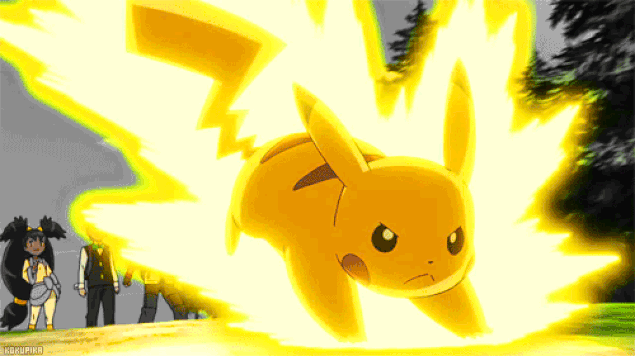
AUTISTIC SAVANTS
What about autistic savants? Above are several examples, including Singapore artist Tay Jun Yi who designed the artwork on the bags we were all given.
Ezra Chan won the United Overseas Bank Most Promising Painter of the Year.
I watched Stephen Wiltshire draw the landscape of Singapore after flying over just once in a helicopter. Incredible. Utterly baffling how one can remember so much detail. How did he do it?
Satoshi Tajiri, the creator of Pokemon is on the autism spectrum, and he attributes characters to his childhood hobby of collecting bugs and insects.
THE FUTURE
What about the future? Perhaps we could adopt a lifespan philosophy to look at the entire life of a person with autism spectrum disorder? Maybe we should attempt earlier diagnosis and intervention? More training, more jobs, better integration with mainstream schools?
We should stop regarding autistic people as different. We should look at autism as variations of the normal spectrum, in the same way that we look at people's height and weight.
To achieve this, we encourage the active involvement everyone.


WORLD AUTISM AWARENESS DAY
Support for the United Nation’s World Autism Awareness Day was initiated by Professors Kon Oi Lian and Paul Yen, Duke-NUS School of Medicine.
YOUTHS FOR AUTISM (YFA)
Youths for Autism is an internship program that is meaningfully structured within the special education sector.
30th ANNIVERSSRY OF RAINBOW CENTRE (2017)
In 2017 we celebrated the 30th Anniversary of the Rainbow Centre. Faridah Ali Chang, Geraldine Song and I wrote a musical entitled “Beyond the Rainbow” where we involved staff and students from our schools.
FINAL WORDS
At the end of the day, I like to see myself as a historian, looking at the broader picture, evaluating the evolution and understanding of this complex and baffling disorder.
We have a long way to go, but slowly, step by step, we are making progress. I see it in the children who have learnt to cope better with their lives, in the parents who are actively involved in their child’s education, and in the wider society who are now more aware and more supportive for people on the autistic spectrum.
The next major challenge facing us is helping the older autistic individuals. We need to help them find jobs, provide lifelong care, anticipate and treat medical and social problems associated with ageing.
I invite all of you to join us to give our friends a better future!
Thank you!

ACKNOWLEDGEMENTS
Special thanks to June Tham, Faridah Ali Chang, Sandy Tan, and Kenneth Poon in the preparation of this talk. I would also like to thank the Rainbow Centre board members, teachers, therapists, administration staff and parents; I am grateful to all the staff from the Ministry of Education and the Ministry of Culture, Development and Youth, who have been so supportive over the years. I would also like to thank our patron, Professor Tommy Koh for his strong support. They are the ones who truly made a difference in the lives of autism spectrum disorder persons. Thank you all!
Presented at the Asia Pacific Conference, Resorts World Singapore 20 June 2019
Kenneth Lyen

SELECTED REFERENCES
1. Rainbow Dreams: editors: June Tham-Toh Syn Yuen, Kenneth Lyen, Kenneth K Poon, Lee Eng Hin, Manoj Pathnapuram. Published by Armour Publishing, Singapore (2012). ISBN-13: 978-9814413633
https://www.amazon.com/Rainbow-Dreams-June-Tham-Toh-Yuen/dp/9814413631/
2. Autism: a new introduction by Sue Fletcher Watson and Francesca Happe.Published by Routledge (2019). ISBN 978-1-315-10169-9
3. Autism. Wikipedia: https://en.wikipedia.org/wiki/Autism
4. Autism Spectrum Disorder. eMedicine: https://emedicine.medscape.com/article/912781-overview#showall
